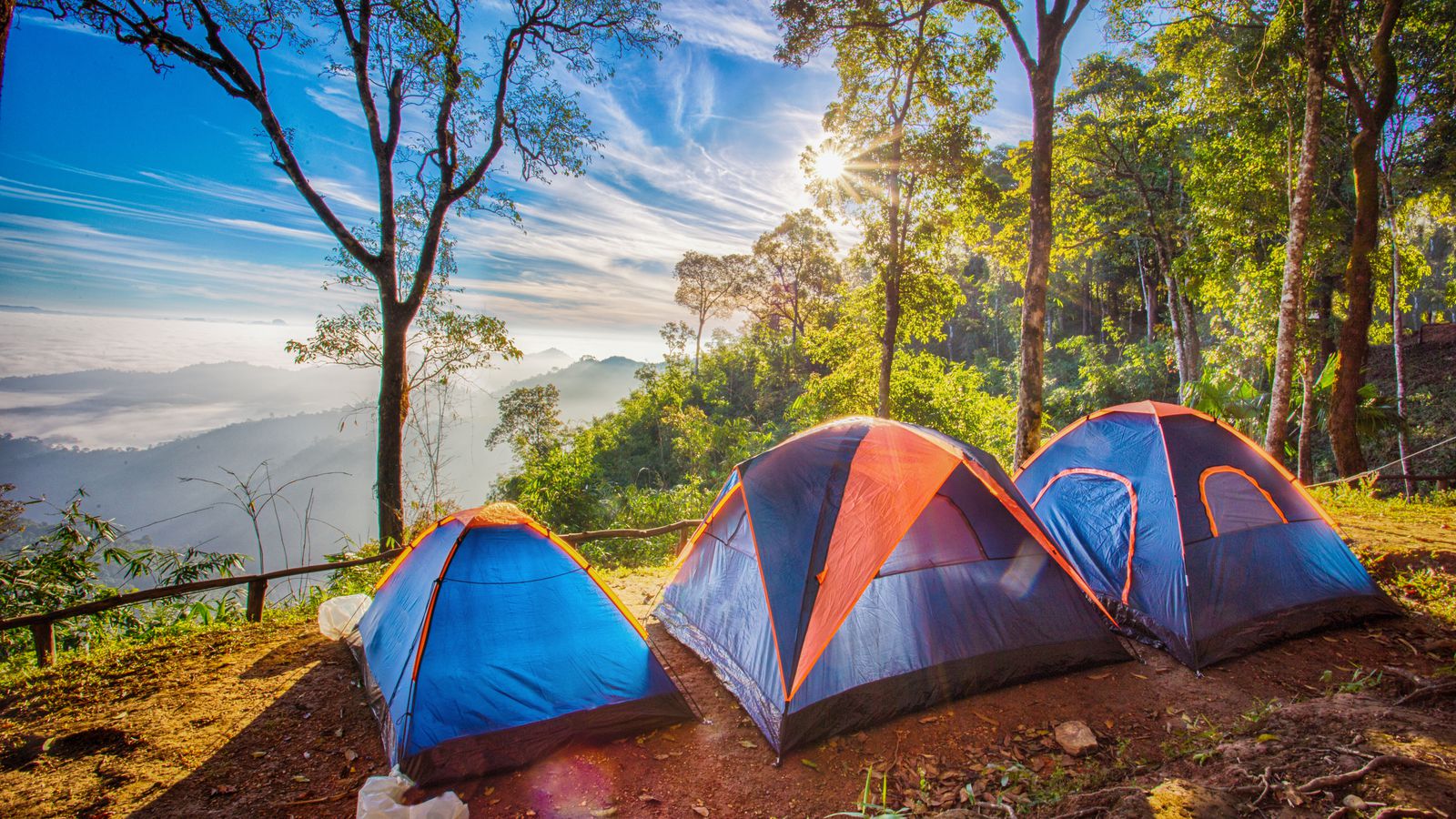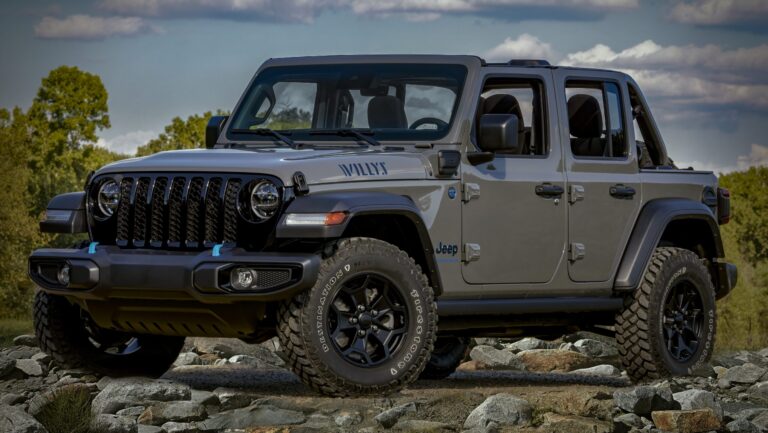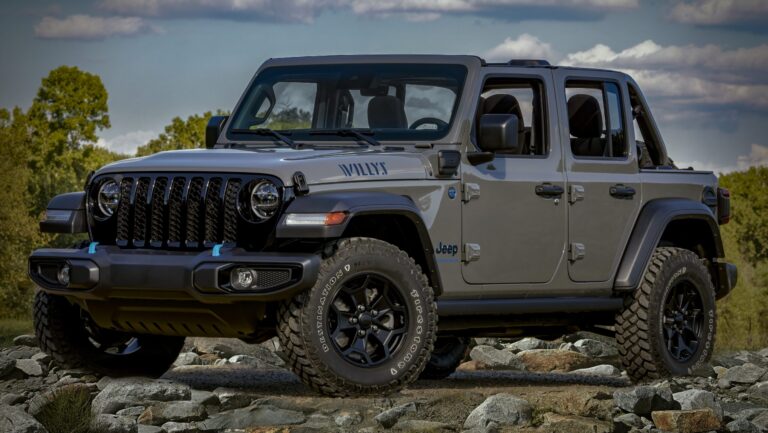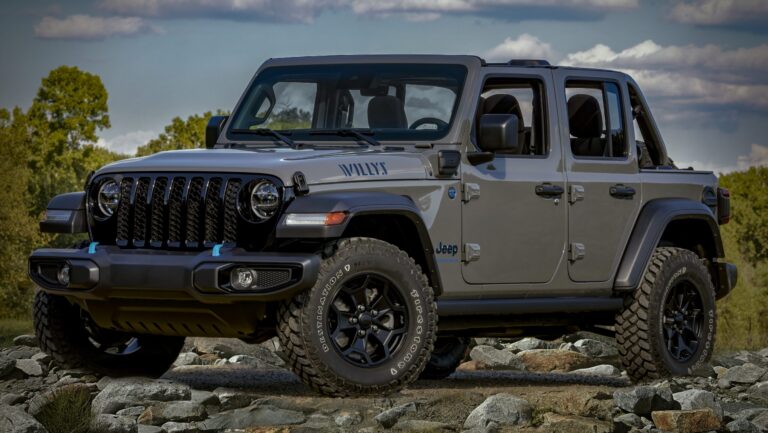Camping With Jeep Wrangler: Your Ultimate Guide to Off-Grid Adventure
Camping With Jeep Wrangler: Your Ultimate Guide to Off-Grid Adventure jeeps.truckstrend.com
The open road calls, but for some, the true adventure begins where the pavement ends. This is the realm of "Camping With Jeep Wrangler" – an exhilarating fusion of off-road capability, rugged self-reliance, and the pure joy of connecting with nature. More than just a vehicle, a Jeep Wrangler becomes your mobile basecamp, a gateway to secluded wilderness, and a reliable partner in forging unforgettable outdoor experiences. It’s about leveraging the Wrangler’s legendary prowess to access remote, breathtaking campsites that traditional RVs or even standard SUVs could never reach, transforming a simple camping trip into an epic journey of exploration and freedom.
This comprehensive guide will delve into every facet of Jeep Wrangler camping, from understanding its unique advantages to equipping your rig, planning your adventures, and mastering the art of off-grid living.
Camping With Jeep Wrangler: Your Ultimate Guide to Off-Grid Adventure
Why a Jeep Wrangler for Camping? The Ultimate Adventure Rig
The Jeep Wrangler isn’t just a car; it’s a statement, a lifestyle, and arguably, the quintessential vehicle for off-road camping and overlanding. Its design and engineering are inherently geared towards conquering challenging terrain, making it an unparalleled choice for reaching those pristine, untouched campsites.
- Unrivaled Off-Road Capability: This is the Wrangler’s core strength. With its robust 4×4 system, high ground clearance, short wheelbase (especially 2-door models), solid axles, and exceptional approach, breakover, and departure angles, a Wrangler can navigate rocky trails, muddy paths, and steep inclines with confidence. This allows access to remote public lands and backcountry trails that are otherwise inaccessible, opening up a world of secluded camping opportunities.
- Modularity and Versatility: Few vehicles offer the same level of adaptability. Removable doors and roof panels transform the Wrangler into an open-air vehicle, enhancing the immersive outdoor experience. This modularity also facilitates various camping setups, from rooftop tents to custom interior sleeping platforms.
- Robust Aftermarket Support: The Jeep Wrangler boasts one of the largest and most diverse aftermarket communities. This means an endless array of parts and accessories – from lift kits and heavy-duty bumpers to integrated storage solutions and auxiliary lighting – are available to customize your rig precisely for your camping needs.
- Durability and Reliability: Built for rugged environments, Wranglers are designed to withstand abuse. Their relatively simple mechanical design, especially older models, makes them easier to maintain and repair in the field, a crucial factor when you’re far from civilization.
- Community and Culture: Owning a Jeep Wrangler connects you to a vibrant community of like-minded adventurers. This network offers a wealth of knowledge, shared experiences, and camaraderie, enhancing your camping journey.

Types of Jeep Wrangler Camping: Choose Your Adventure Style
The versatility of the Jeep Wrangler allows for several distinct approaches to camping, each offering a unique experience.
- Overlanding: This is the pinnacle of self-sufficient, multi-day, or multi-week adventures. Overlanding with a Wrangler involves traveling long distances over varied terrain, often through remote areas, with the vehicle fully equipped to support occupants independently. It emphasizes the journey as much as the destination, requiring extensive planning, robust vehicle modifications, and comprehensive gear for prolonged periods off-grid.
- Base Camp Camping: Less intensive than overlanding, base camp camping involves driving your Wrangler to a central, often accessible, campsite. From this base, you can embark on day trips, exploring surrounding trails, hiking, fishing, or simply relaxing. Your Wrangler serves as transportation and a secure storage hub, but the focus is less on continuous travel and more on establishing a comfortable temporary home.
- Rooftop Tent (RTT) Camping: A popular choice for Wrangler owners, RTTs mount directly to a roof rack, unfolding into a comfortable, elevated sleeping area in minutes. They offer quick setup, keep you off the ground away from critters and moisture, and free up interior space. RTTs are excellent for both overlanding and base camp setups, providing a cozy and convenient sleeping solution.
- Ground Tent Camping: The traditional and often most affordable option. Ground tents offer flexibility in campsite selection, as they don’t require the vehicle to be perfectly level. They come in various sizes and styles, from compact backpacking tents to spacious family shelters. While requiring more setup time than an RTT, they allow you to separate your living space from your vehicle.
- Vehicle-Integrated Camping: For those who prefer simplicity and security, especially in 4-door Wrangler Unlimited models (JKU/JLU), sleeping inside the vehicle is an option. This usually involves removing the rear seats or building a custom sleeping platform. It offers protection from elements and wildlife, quick "pack up," and a discreet camping solution, though space is limited.


Essential Gear for Jeep Wrangler Camping: Equipping Your Rig
Successful Jeep Wrangler camping hinges on proper preparation and the right equipment. Your gear list will vary depending on your chosen camping style, but some essentials are universal.
Vehicle-Specific Upgrades
- Tires: All-Terrain (AT) or Mud-Terrain (MT) tires are crucial for off-road traction and durability.
- Suspension: A lift kit not only provides increased ground clearance but also improves articulation and allows for larger tires, enhancing off-road capability and ride comfort over rough terrain.
- Armor: Skid plates protect vital underbody components (oil pan, transfer case, fuel tank), while rock sliders protect the rocker panels from trail damage.
- Auxiliary Lighting: LED light bars and pod lights improve visibility during night driving on trails and illuminate your campsite.
- Storage Solutions: Roof racks (for RTTs, fuel cans, recovery boards), cargo organizers, drawer systems, and interior storage bags maximize space and keep gear secure and accessible.
Recovery Gear
Getting stuck is part of the off-road adventure. Being prepared for self-recovery or assisting others is paramount.
- Winch: Essential for self-recovery from mud, sand, or steep obstacles.
- Snatch Strap/Kinetic Recovery Rope: For dynamic vehicle recovery.
- Tree Saver Strap & Shackles: For safe winching.
- Traction Boards (e.g., Maxtrax): Help gain traction on loose surfaces.
- Shovel & Axe: For digging out, clearing obstacles, or managing firewood.
- Hi-Lift Jack: A versatile tool for lifting, winching, or spreading.
Navigation & Communication
- GPS Unit & Offline Maps: Relying solely on cell service is dangerous in remote areas. Use dedicated GPS units (Garmin, OnX Offroad, Gaia GPS) with downloaded maps.
- Satellite Communicator: Devices like Garmin inReach or Zoleo allow for two-way communication and SOS calls outside cellular range.
- Two-Way Radios (CB/GMRS): For communication with other vehicles in your convoy.
Sleeping & Shelter
- Rooftop Tent or Ground Tent: Based on your preference.
- Sleeping Bags: Rated for the lowest temperatures you might encounter.
- Sleeping Pads: For insulation and comfort.
- Pillows: Inflatable or compact options.
Cooking & Food Prep
- Portable Camp Stove: Propane or butane for quick meals.
- Cooler or Portable Refrigerator/Freezer: For keeping food fresh.
- Cooking Utensils, Pots, Pans, Plates: Nesting sets save space.
- Food Storage Bins: To keep food organized and protected from animals.
Water Management
- Water Jerry Cans or Portable Water Tank: Crucial for drinking, cooking, and hygiene.
- Water Filter/Purifier: For sourcing water from natural sources if necessary.
Power Solutions
- Portable Power Station: Battery banks (Jackery, Goal Zero) for charging devices and running small appliances.
- Dual Battery System: For powering accessories without draining your starting battery.
- Solar Panels: To recharge power stations or auxiliary batteries.
- Inverter: To convert 12V DC power to 120V AC for household electronics.
Safety & First Aid
- Comprehensive First Aid Kit: Stocked for injuries, burns, and common ailments.
- Fire Extinguisher: For vehicle or campfire emergencies.
- Emergency Blanket & Whistle: Signaling and warmth.
- Headlamps & Lanterns: Multiple light sources are essential.
Planning Your Jeep Wrangler Camping Trip: Preparation is Key
A successful Jeep Wrangler camping trip isn’t just about the gear; it’s about meticulous planning.
- Research Destinations: Identify suitable public lands (BLM, National Forests), state parks, or private campgrounds. Check for permits required, fire restrictions, road conditions, and any specific regulations (e.g., dispersed camping rules).
- Route Planning: Utilize detailed maps and GPS. Plot your route, noting potential fuel stops, points of interest, and alternative paths. Download offline maps for areas without cell service. Consider the difficulty of trails relative to your vehicle’s capability and your driving experience.
- Vehicle Preparation: Before any significant trip, perform a thorough vehicle inspection. Check all fluids, tire pressure (including spare), brakes, lights, and belts. Carry a basic tool kit and essential spare parts (fuses, belts, hoses).
- Packing Strategy: Distribute weight evenly in your Wrangler to maintain stability and handling. Secure all gear to prevent shifting during off-road travel. Pack frequently used items in easily accessible locations. Consider a "first-in, last-out" approach for less essential items.
- Leave No Trace Principles: Adhere strictly to the seven Leave No Trace principles. Pack out everything you pack in, dispose of waste properly, minimize campfire impacts, respect wildlife, and stay on designated trails. This ensures the wilderness remains pristine for future adventurers.
Setting Up Camp with Your Jeep Wrangler: Making it Home
Once you arrive at your chosen spot, efficient camp setup enhances your experience.
- Site Selection: Choose a flat, level area, ideally sheltered from wind and away from potential hazards like dead trees. Ensure you’re not blocking any trails or access points.
- Vehicle Positioning: Position your Wrangler to maximize utility. Use it as a windbreak, a platform for lighting, or to provide shade. If using an RTT, ensure the vehicle is as level as possible.
- Camp Setup: Unload essential gear first (tent, sleeping bags, chairs). Set up your kitchen area, fire pit (if allowed and safe), and any privacy shelters. Organize your gear to maintain a clean and functional campsite.
- Safety First: Be aware of your surroundings. Secure food from wildlife. Maintain a safe distance from campfires, and always have water or a shovel nearby to extinguish them completely.
Challenges and Solutions: Overcoming Obstacles
Even with the best planning, challenges can arise. Being prepared for them is part of the adventure.
- Limited Interior Space: Wranglers, especially 2-door models, have limited cargo space. Solution: Utilize roof racks, tailgate storage, cargo nets, and highly organized packing systems (e.g., military-style duffels, modular bins).
- Weather Variability: Remote areas can experience rapid weather changes. Solution: Pack appropriate clothing layers, a robust tent rated for various conditions, and be flexible with your itinerary. Check forecasts regularly (where available) and have contingency plans.
- Mechanical Issues: Breakdowns far from services can be daunting. Solution: Conduct thorough pre-trip inspections, carry a basic toolkit and essential fluids/parts, and know how to perform basic field repairs. Learn to identify common issues.
- Navigation & Getting Lost: Lack of cell service is common. Solution: Rely on dedicated GPS devices, downloaded offline maps, and physical paper maps as a backup. Always know your general direction and surroundings.
- Privacy and Security: Camping in remote areas can raise concerns. Solution: Choose your campsites wisely, avoid overly exposed or obvious locations, secure valuables, and always let someone know your itinerary.
Estimated Investment for Jeep Wrangler Camping
The cost of embarking on Jeep Wrangler camping varies wildly depending on whether you’re starting from scratch or already own a capable Wrangler. Here’s an estimated breakdown:
| Category | Estimated Cost Range | Notes |
|---|---|---|
| Jeep Wrangler (Vehicle) | $25,000 – $80,000+ | Used JL/JK models vs. New JL. Highly variable based on year, trim, condition, and modifications. |
| Basic Camping Gear | $500 – $2,000 | Ground tent, sleeping bags, pads, portable stove, basic cooler, camp chairs. |
| Recovery Gear | $300 – $1,500 | Winch (if not included), snatch strap, shackles, traction boards, shovel. |
| Vehicle Upgrades (Mid-Range) | $2,000 – $10,000+ | All-Terrain tires, modest lift kit, basic skid plates, roof rack. Can go much higher. |
| Rooftop Tent (Optional) | $1,000 – $4,000 | Soft shell vs. hard shell, size, brand. |
| Power Solutions (Optional) | $300 – $2,000+ | Portable power station, dual battery system, solar panels. |
| Navigation/Comm. Gear | $150 – $800 | Handheld GPS, satellite messenger subscription. |
| Total Initial Investment | $28,000 – $100,000+ | This range is highly dependent on existing gear, vehicle choice, and desired level of modification. |
Note: These are estimates. Prices can fluctuate significantly based on brand, quality, sales, and whether items are bought new or used. Fuel, food, and permit costs for individual trips are additional.
Frequently Asked Questions (FAQ) About Camping With Jeep Wrangler
Q: Can I sleep inside a 2-door Wrangler?
A: It’s possible but very cramped, typically only suitable for a single person and requiring the front seats to be moved far forward or folded. A 4-door Wrangler Unlimited offers significantly more interior space for sleeping, especially with the rear seats removed or folded flat.
Q: What’s the best rooftop tent (RTT) for a Wrangler?
A: The "best" RTT depends on your budget, desired capacity, and features. Popular and reliable brands include iKamper, Thule Tepui, Smittybilt, and CVT. Consider hard-shell RTTs for quicker setup and better weather resistance, or soft-shell RTTs for more sleeping space and a lower price point. Ensure your roof rack can safely support the RTT’s weight (both static and dynamic loads).
Q: Do I need a lift kit for camping?
A: Not strictly necessary for all camping, especially if you stick to maintained dirt roads. However, a lift kit increases ground clearance and allows for larger, more capable tires, which are beneficial for tackling rougher trails to access more secluded campsites and improving the overall ride quality off-road.
Q: How do I power electronics while camping in my Wrangler?
A: Several options exist:
- Portable Power Stations: Battery banks (e.g., Jackery, Goal Zero) charged via solar panels, your car’s 12V outlet, or wall outlet before the trip.
- Dual Battery Systems: Install a secondary battery dedicated to running accessories, isolated from your starting battery.
- Inverter: Connects to your 12V system to provide 120V AC power for household electronics.
- Solar Panels: Can be mounted on a roof rack or portable to recharge your power source.
Q: Is it safe to camp alone in a remote area with my Wrangler?
A: It can be safe, but requires extra precautions. Always tell someone your detailed itinerary and expected return time. Carry a satellite communicator for emergency contact. Be knowledgeable about basic first aid and vehicle recovery. Be aware of local wildlife and environmental conditions. Trust your instincts.
Q: What should I do if my Jeep Wrangler gets stuck off-road while camping?
A: Prevention is key, but if it happens, having the right recovery gear (winch, recovery strap, traction boards, shovel) and knowing how to use it safely is paramount. Consider taking an off-road recovery course before venturing into challenging terrain. Never attempt recovery without understanding the proper techniques and safety precautions.
Conclusion: Embrace the Journey
Camping with a Jeep Wrangler is more than just a trip; it’s an immersive experience that blends the thrill of off-road adventure with the tranquility of nature. It offers unparalleled freedom to explore, to push boundaries, and to discover places most people only dream of. While it demands preparedness, careful planning, and a willingness to learn, the rewards – breathtaking views, profound solitude, and the satisfaction of self-sufficiency – are immeasurable.
So, whether you’re a seasoned overlander or a curious newcomer, equip your Wrangler, plan your route, and embrace the call of the wild. The ultimate off-grid adventure awaits, and your Jeep Wrangler is ready to take you there.





